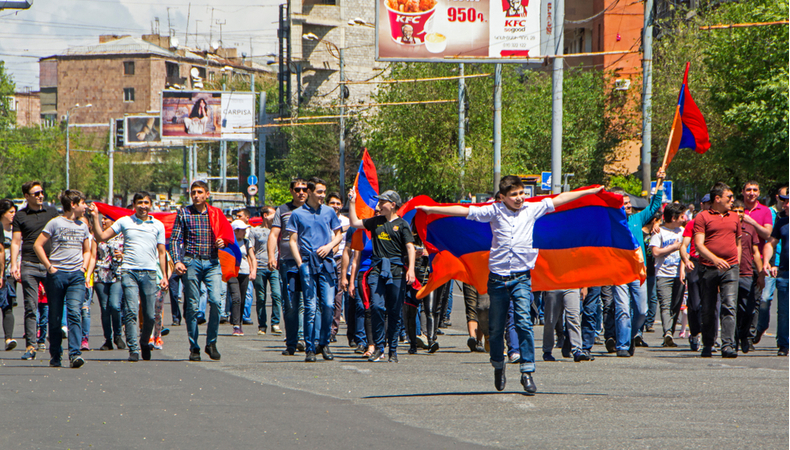Armenia announces the lifting of martial law

The Parliament of Armenia announced the lifting of martial law on Wednesday 24 March. The measure was adopted on September 27, 2020, after the offensive that the Azerbaijani army had launched against Armenia in the disputed territory between the two countries, Nagorno-Karabakh.
The Russian news agency Ria has reported that 118 deputies of the Parliament of Yerevan voted in favor of the revocation, under the agreement that the Armenian Prime Minister, Nikol Pashinyan, had reached, on March 17, with the government opposition. That day, Pashinyan took part in an extraordinary meeting with the leader of the opposition Prosperous Armenia party, Gagik Tsarukyan.
Shortly after, Pashinyan had also met, separately, with other representatives of the parties that opposed the current government of the country, such as “Illuminated Armenia”, of a liberal and pro-European mold, represented by Edmon Marukyan. The next day, Wednesday 18 March, the Prime Minister of Armenia declared that, on the sidelines of the talks, officials had agreed that early parliamentary elections would be the most appropriate solution to lift the country out of the internal political crisis.
The abolition of martial law was a necessary condition for the holding of early elections in Armenia, scheduled for June 20. This is because, as stated in paragraph 2 of Article 91 of the Constitution of Armenia, “elections to the National Assembly are not allowed during martial law or a state of emergency.”
Armenia is facing a profound institutional crisis caused by the escalation of the Azerbaijani-Armenian conflict over the Republic of Artsakh, also known as Nagorno-Karabakh. Tensions between Yerevan and Baku intensified starting September 27, 2020, when the Azerbaijani army launched a massive artillery strike in Nagorno-Karabakh along the 1994 ceasefire line, hitting civilian settlements, including the capital Stepanakert.
On November 9, 2020, Russia, Azerbaijan, and Armenia signed an agreement whereby the latter undertook, by December 1, to return the seven districts bordering Nagorno-Karabakh conquered in the 1991-94 war to Azerbaijan. Following this epilogue, the Armenian government had invited Pashinyan to resign. The agreement was not welcomed either by the people, who took to the streets to demonstrate, or by the government, let alone by the country’s military forces.
The internal crisis worsened when, on February 25, the Armenian premier accused the army of carrying out a “coup d’etat”. As a result, Pashinyan requested the dismissal of 40 senior officers, including the Chief of Staff, Onik Gasparyan. The accusation was made after the army stated the premier was invited to resign due to the protests that continued to shake the country when, after the peace agreement, the defeat of Armenia in the war against Azerbaijan was declared.
Pashinyan sent two motions to the president of Armenia, Armen Sarkissian, for Gasparyan’s sacking. According to the country’s Constitution, only the President of the Republic, on the proposal of the Prime Minister, can remove the Chief of Staff from his post. As the Russian newspaper Kommersant reports, Gasparyan was effectively fired and replaced by Stepan Galstyan. However, when the Armenian Administrative Court ruled on March 18 that Gasparyan could resume his activities as the country’s chief of staff, the man was put back in his place.
Armenian officials had already discussed, on March 1, that holding early elections would unblock the internal crisis. However, on the same day, Ruben Rubinian, a member of the Civil Contract party, led by the premier, said early voting would only be possible after the resignation of the Chief of Staff of the Yerevan Armed Forces.




